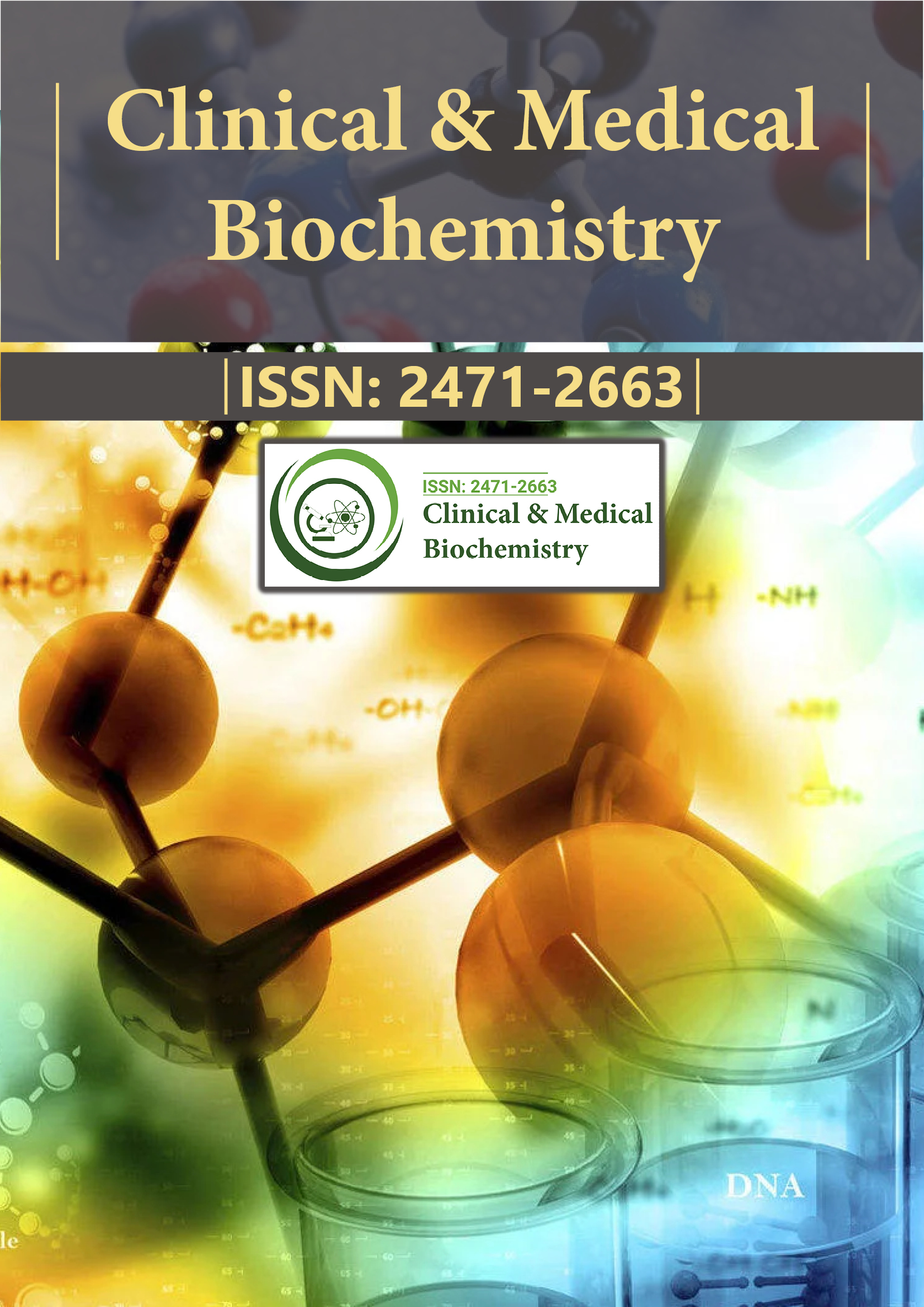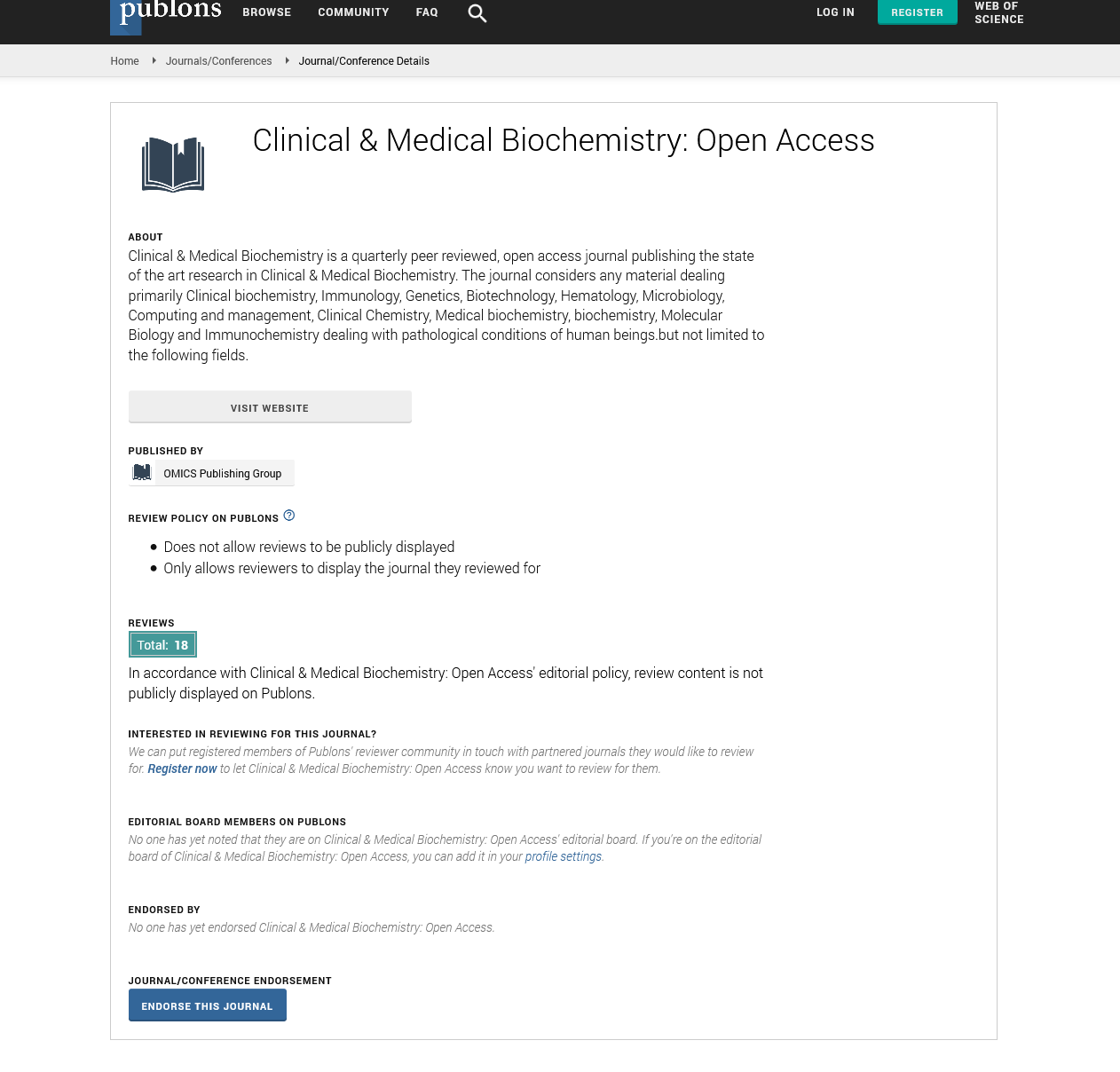Indexed In
- RefSeek
- Directory of Research Journal Indexing (DRJI)
- Hamdard University
- EBSCO A-Z
- OCLC- WorldCat
- Scholarsteer
- Publons
- Euro Pub
- Google Scholar
Useful Links
Share This Page
Journal Flyer

Open Access Journals
- Agri and Aquaculture
- Biochemistry
- Bioinformatics & Systems Biology
- Business & Management
- Chemistry
- Clinical Sciences
- Engineering
- Food & Nutrition
- General Science
- Genetics & Molecular Biology
- Immunology & Microbiology
- Medical Sciences
- Neuroscience & Psychology
- Nursing & Health Care
- Pharmaceutical Sciences
Perspective - (2024) Volume 10, Issue 3
Thrombosis and Coagulation: Pathophysiology and Treatment Approaches
Emma Charlotte*Received: 28-Aug-2024, Manuscript No. CMBO-24-26872; Editor assigned: 30-Aug-2024, Pre QC No. CMBO-24-26872 (PQ); Reviewed: 13-Sep-2024, QC No. CMBO-24-26872; Revised: 20-Sep-2024, Manuscript No. CMBO-24-26872 (R); Published: 27-Sep-2024, DOI: 10.35841/2471-2663.24.10.227
Description
Thrombosis and coagulation play essential roles in the body's capacity to control bleeding and restoration vascular integrity following injury. These systems, however, can become challenging if they are not effectively regulated, resulting in a variety of health issues linked to improper or excessive clot formation. Coagulation begins in reaction to vascular damage. When a blood artery is injured, platelets, which are minute cell fragments in the blood, attach to the exposed tissue and activate. This activation causes the release of a variety of chemicals that encourage more platelet aggregation, resulting in a initial platelet plug at the injury site. This plug temporarily closes the wound and stops additional bleeding.
At the same time, a series of enzyme-mediated reactions known as the coagulation process is activated. This process involves multiple clotting factors that work in a specific sequence to produce fibrin, a protein that strengthens and stabilizes the platelet plug. The process has intrinsic and extrinsic pathways. The intrinsic pathway is activated by damage to the blood vessel itself and involves clotting factors that are already present in the blood. It leads to the activation of factor X. The extrinsic pathway is activated by tissue factor released from damaged tissues and quickly activates factor VII. Both pathways come together on the common pathway, leading to the activation of factor X. Factor X then converts prothrombin into thrombin, which subsequently converts fibrinogen into fibrin. This conversion results in a stable clot that effectively seals the wound and stops bleeding.
After the clot has served its purpose, it must be dissolved to restore normal blood flow. This process, known as fibrinolysis, includes dissolving the fibrin matrix and removing the clot. Plasminogen, incorporated into the clot, is activated to plasmin, an enzyme that degrades fibrin and helps dissolve the clot. The balance between clot formation and dissolution is essential to ensure that clots form when necessary and are removed when they are no longer necessary. Disruptions in this balance can lead to pathological conditions such as thrombosis, where blood clots form inappropriately within blood vessels. Deep Vein Thrombosis (DVT) is one such condition, characterized by the formation of a clot in a deep vein, typically in the legs. If a DVT clot dislodges, it can travel to the lungs, causing a Pulmonary Embolism (PE). PE obstructs blood flow in the pulmonary arteries, potentially leading to severe complications, including respiratory distress and cardiovascular instability.
Arterial thrombosis is another significant condition that occurs in arteries, often linked with atherosclerosis, a condition where fatty deposits build up in the arterial walls. When these plaques rupture, they expose thrombogenic materials, leading to platelet activation and clot formation. Arterial thrombosis can result in myocardial infarction (heart attack) or stroke, depending on where the clot forms. Several risk factors are associated with thrombosis. These include genetic predispositions such as factor V Leiden mutation or prothrombin gene mutation, which increase the probability of abnormal clotting. Acquired conditions, such as cancer, pregnancy, or prolonged immobility, also elevate the risk of thrombosis. Habitual behaviours like smoking, obesity and certain medications further contribute to thrombotic risk.
Management of thrombosis involves a combination of pharmacological and non-pharmacological strategies. Anticoagulant therapy is a primary approach, utilizing medications such as heparin, Low Molecular Weight Heparins (LMWHs) and vitamin K antagonists like warfarin. Heparin and LMWHs enhance the activity of antithrombin, which inhibits thrombin and factor Xa. Warfarin inhibits vitamin K epoxide reductase, which is necessary for synthesizing several clotting factors. Direct Oral Anticoagulants (DOACs) are innovative agents that include factor Xa inhibitors and direct thrombin inhibitors, offering advantages such as fewer dietary restrictions and predictable pharmacokinetics.
Antiplatelet agents are used primarily for managing arterial thrombosis. Medications such as aspirin, clopidogrel and ticagrelor inhibit platelet activation and aggregation, reducing the risk of clot formation in arteries. These drugs are frequently employed in the treatment of coronary artery disease and following procedures like stent placement. Thrombolytic therapy is used in acute situations to dissolve existing clots. Thrombolytics, such as tissue Plasminogen Activator (tPA), activate plasminogen to plasmin, which breaks down fibrin and dissolves the clot. This therapy is especially effective in cases of acute myocardial infarction or stroke where rapid restoration of blood flow is essential.
Non-pharmacological approaches also play a role in managing thrombosis. Mechanical methods, such as compression stockings and intermittent pneumatic compression devices, help prevent deep vein thrombosis, particularly in patients experiencing surgery or who are immobilized. Lifestyle changes, including weight management, regular exercise and smoking cessation, are important for reducing the risk of thrombosis. Managing thrombosis and coagulation disorders involves resolving fundamental causes and individual risk factors. For example, controlling cancer or other diseases can help lower the risk of thrombotic events. Personalized treatment plans may be developed for individuals with natural thrombophilia to manage their risk of thromboembolism.
Conclusion
In conclusion, thrombosis and coagulation are complex processes that involve the formation, stabilization and resolution of blood clots. Effective management requires a balanced approach to prevent excessive clotting while resolving risk factors and fundamental conditions. Advances in treatment continue to improve patient results, but challenges continue in improving therapy and minimizing the risk of bleeding complications caused by anticoagulant and antiplatelet medicines.
Citation: Charlotte E (2024). Thrombosis and Coagulation: Pathophysiology and Treatment Approaches. Clin Med Bio Chem. 10:227.
Copyright: © 2024 Charlotte E. This is an open-access article distributed under the terms of the Creative Commons Attribution License, which permits unrestricted use, distribution, and reproduction in any medium, provided the original author and source are credited.

